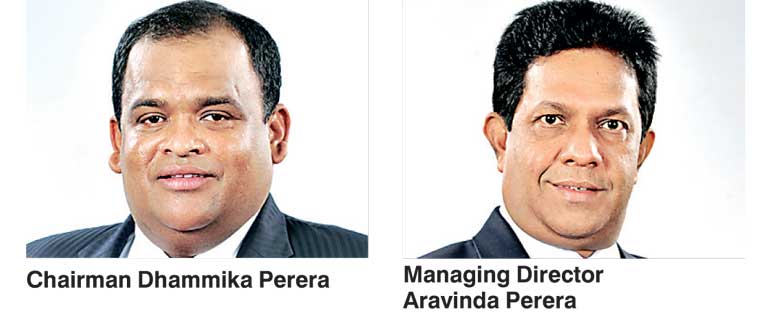Tuesday Jan 14, 2025
Tuesday Jan 14, 2025
Monday, 17 August 2015 00:00 - - {{hitsCtrl.values.hits}}

Sampath Group recorded an impressive half year growth in profitability with a pre-tax profit of Rs 4.7 b, an increase of 32% over the previous year’s first half pre-tax profit of Rs. 3.6 b. The profit after tax for the half year ended 30 June 2015 stood at Rs. 3.2 b, which is an increase of 13.8% over the corresponding period in 2014.
The bank, the main entity of the Group, recorded a profit before tax of Rs. 4.4 b, compared to Rs. 3.4 b recorded in the corresponding period of 2014, which is an increase of 30.3%. The post–tax profit for the six months ended 30 June 2015 of the bank has also rose by 11.8%, from Rs. 2.7 b in 2014 to Rs. 2.9 b in 2015.
A lower growth rate in post-tax profits, both at the Group and bank levels than that in pre-tax profits, arose due to reversal of certain tax over provisions of previous years, upon finalisation of the respective tax returns in the 1H 2014.
Net Interest Income (NII) increased from Rs. 7.8 b in 1H 2014 to Rs. 8.5 b in 1H 2015, registering a moderate growth of Rs. 729 m (9.4%). This growth in NII was achieved despite interest margin shrinking from 4.07% in the 1 H 2014 to 3.80% in 1H 2015, as a result of the growth in the fund-based operations of the bank. However, timely re-pricing measures taken by the ALCO, the bank’s success in minimising the NPLs and improvement in the CASA ratio, helped to maintain the Net Interest Margins (NIM) at current levels.
The bank’s net fee and commission income for the first half of 2015 stood at Rs. 2.8 b, which was a growth of 26%. Increase in business volume from operations such as credit card and debit cards, Trade related services and other banking services contributed to this growth.
Other operating income too recorded an impressive growth of 156% and stood at Rs. 1.3 b in 1H 2015 compared to Rs. 0.5 b recorded in the corresponding period of 2014. The major contributory factors for this increase were realised exchange income and income from currency notes operations.
Operating expenses of the bank increased from Rs. 5.6 b in 1H 2014 to Rs. 6.6 b during the period under review, reflecting a growth of 17%. This was due to general price increases, business promotional campaigns, credit card related expenses and salary increments given to the staff members during the period under review.
Reduction in provisions against the gold loans (pawning) in 2015 was the main reason for the reduction in collective impairment charge by Rs. 578 m, during the period under review, compared to the corresponding period in 2014. The bank’s total pawning advances as at 30 June 2015 was only 5.1% of the total advances.
Total deposits recorded a growth of 6.3% from Rs. 342 b as at 31 December 2014 to Rs. 364 b as at 30 June 2015. Despite the drop in pawning advances by Rs. 7.3 b during the period, the bank’s total gross advances increased by Rs. 29 b or 9%, from Rs. 311 b as at 31 December 2014 to Rs. 340 b, at the end of the first half of 2015. Total assets stood at Rs. 461 b as at 30 June 2015, reflecting a growth of 6.7% against the total assets as at 31 December 2014.
ROE (after tax) for the six months ended 30 June 2015 stood at 19% reflecting a marginal growth compared to the corresponding period’s 18.77%. ROA (after tax) for the six months ended 30 June 2015 stood at 1.34%. Earnings per share too reported an increase in the 1H 2015 and remained at Rs. 17.38, compared to Rs. 15.56 for the corresponding period of 2014. Similarly, NPL Ratio (Net of Interest In Suspense) also showed an improvement from 1.93% as at 31 December 2014 to 1.71% as at 30 June 2015.
Although the Tier I and Total capital adequacy ratios have marginally reduced by 0.36% and 0.75% respectively compared to 31 December 2014, mainly due to the credit growth mentioned above and the cash dividend paid in April 2015, the bank managed to maintain its capital adequacy ratios, Tier1 (8.47%) and Total (12.87%), well above the minimum regulatory requirements of 5% and 10%, respectively at the end of the first half of 2015.
The bank continued to adopt a policy of leveraging its capital to an optimum level, but will ensure to maintain a capital buffer adequate enough to support its future business expansion and risk profile.